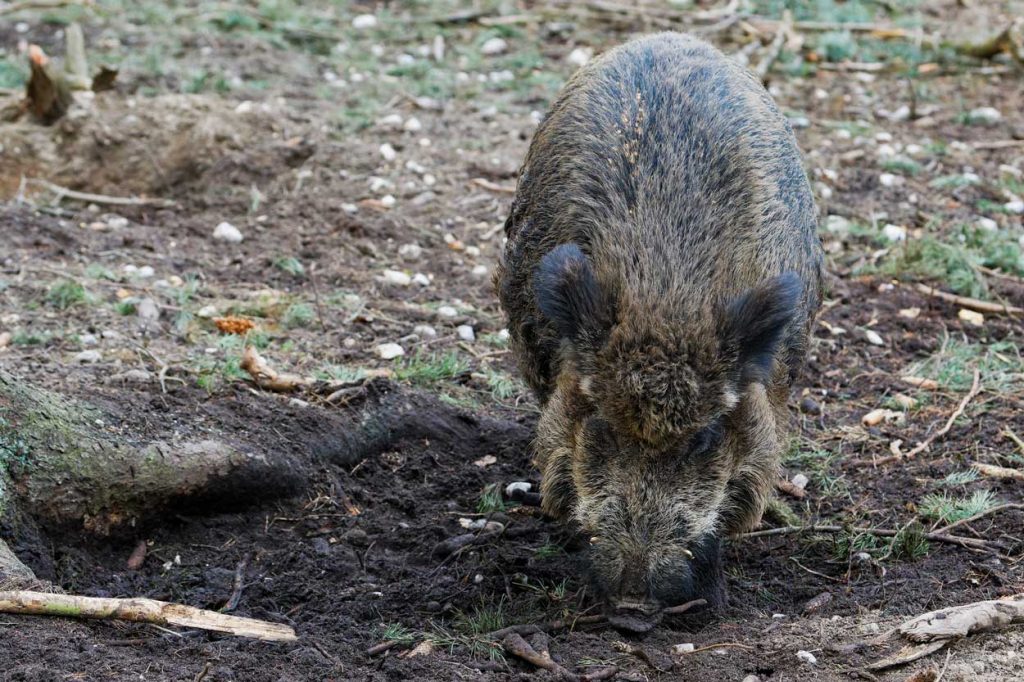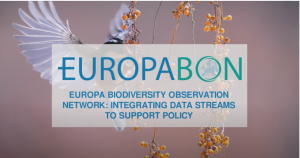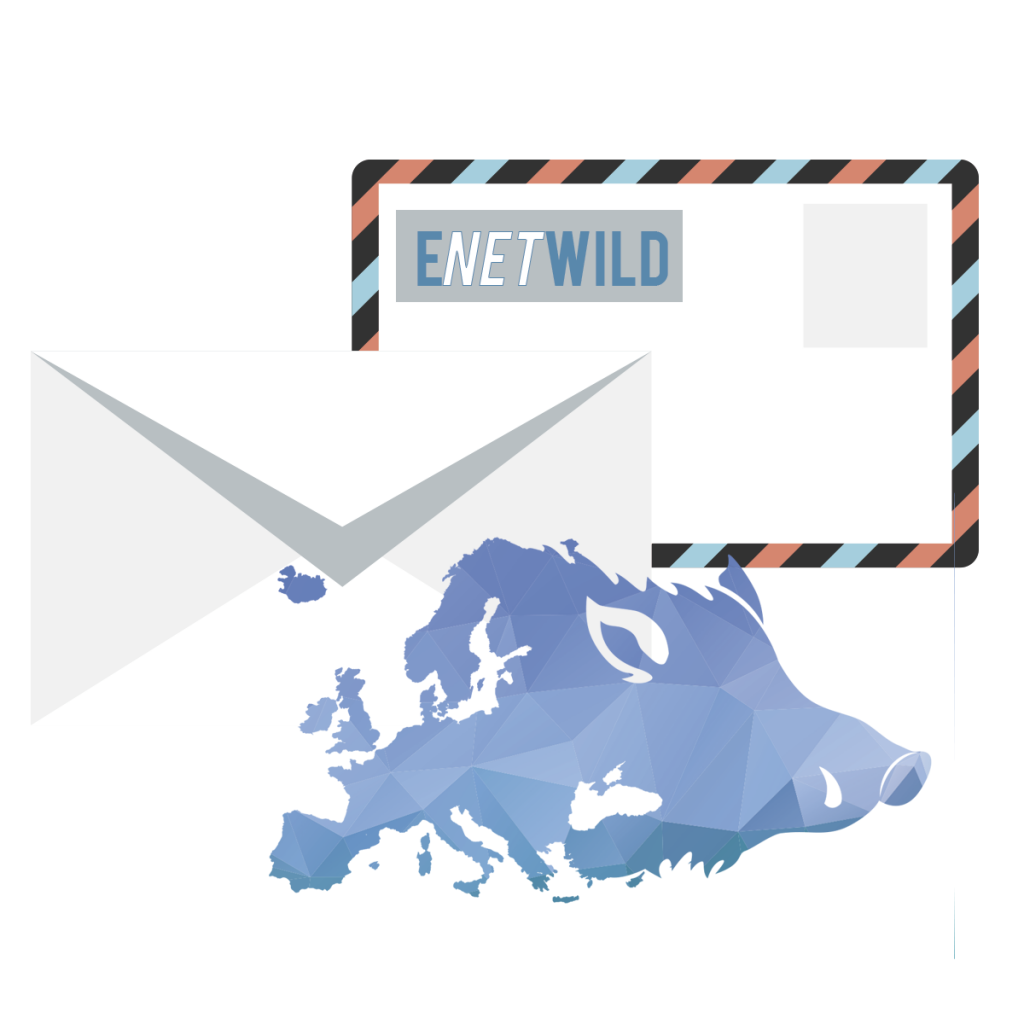Are we ready for harmonised integrated surveillance of wildlife diseases in Europe?
The ENETWILD project (www.enetwild.com) held the online workshop (1st-2nd March 2022) entitled “Harmonized and integrated wildlife disease surveillance across Europe: experts’ analysis and future perspectives”.
National veterinary office chiefs, sub-national (Regional/Local) veterinary authorities, reference labs or hunting, agricultural, wildlife and environmental authorities participated in this interactive event. A total of 133 participants registered to the workshop, representing different stakeholders from 19 countries, as follows:
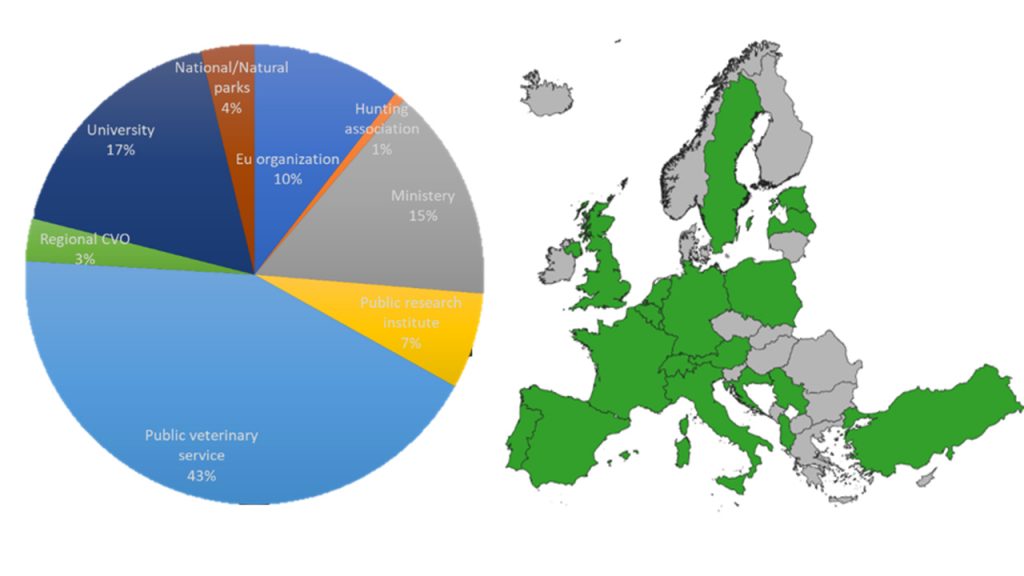
The state of art, challenges and the opportunities on wildlife disease surveillance were discussed in three different sessions:
- Wildlife surveillance in a changing world
- One Health and wildlife diseases
- The state of the art, an overview
During the first day (see below), specialists reviewed the current heritage and publication trends on wildlife diseases, disentangling the roles of the wildlife-livestock interface, vectors, vector-borne diseases, and humans. Subsequently, management strategies, on-going National and European Wildlife Health Surveillance Programs and international policies on wildlife borne diseases were reviewed. At the end of the day, experts presented the future perspectives of wildlife health surveillance in the light of the transformative changes taking place at the European level.
During the second day, participants addressed examples different strategies to monitor Wildlife Health Surveillance in different parts of the world (such as Brazil and Australia). It was noteworthy how supranational institutions (OIE, SIGMA-EFSA: https://www.efsa.europa.eu/en/efsajournal/pub/5556) manage data related to animal health, or the opportunities raised thanks to complementary strategies to monitor wildlife and wildlife diseases, such as citizen science (MosquitoAlert, Mammalnet, SISS-Geo).
Program of the online workshop (1st-2nd March 2022) entitled "Harmonized and integrated wildlife disease surveillance across Europe: experts’ analysis and future perspectives".
- FIRST SESSION: wildlife surveillance in a changing world.
Wildlife diseases in publication databases
S. Zanet/R. Vada (UNITO-ENETWILD)
Wildlife disease surveillance: the heritage
M. Artois (former OIE advisor)
Changes in wildlife in Europe
M. Apollonio (UNiv. of Sassari-ENETWILD)
Future expectations: integrated monitoring
J. Vicente (IREC-ENETWILD)
International policies in animal health management of wildlife borne diseases
F. Berlingieri (D.G. SANCO)
How to Start Up a National Wildlife Health Surveillance Programme
B. Lawson (Zoological Society of London-EWDA) - SECOND SESSION: One Health and wildlife diseases
Future perspectives of wildlife health surveillance in the light of transformative changes
T. Kuiken (EMC-ENETWILD-EWDA)
Wildlife-Livestock interface
C. Gortázar (IREC)
Vector and vector-borne diseases: are they coming?
F. Ruiz-Fons (IREC)
The human side
C. Basler (Institute for Biomedical Sciences)
Are we ready for the future?
E. Ferroglio (UNITO-ENETWILD-WDA)
European wildlife surveillance systems: an overview
P. Duff (APHA Penrith-WDA) - THIRD SESSION: the state of the art, an overview
Australia’s wildlife health surveillance system
K. Cox-Witton/C. Death (Wildlife Health Australia)
Planning and Conducting a National Wildlife Health SurveillanceProgram: Challenges and Options
M. Salman (Colorado State University)
SISS-Geo: Leveraging citizen science to monitor wildlife health risk in Brazil
M. Chame (Fundação Oswaldo Cruz Brazil)
MosquitoAlert: Citizen Science in vector-borne disease surveillance
A. della Torre (Università di Roma)
OIE- WAHIS
P. Tizzani/M. P. Ryser De Giorgis (OIE/Univ. Bern)
EFSA: Sigma
G. Zancanaro (EFSA)
Introductory talk to the workshop: MammalNet as a tool for disease surveillance
G. Smith (APHA-ENETWILD)
Two WORKSHOPS allowed participants to collaboratively identify the main barriers, limitations, gaps, and opportunities in relation to wildlife surveillance in Europe:
Workshop 1: What else is in the background?
Disease surveillance systems are not always prepared to face the changes in abundance and distribution of new host species and emergent pathogens. Those may remain of marginal interest in such systems despite their actual importance. This first workshop highlighted which pathogens and species are interested in those changes, the main difficulties in a surveillance system for their detection and the tools that are already available. The topic was approached under the One Health triad of host, environment, and pathogen.
Workshop 2: Drawing the future: proposals and suggestions
The aim of this second workshop was to draw proposals and suggestions to improve current wildlife disease surveillance systems based on the main gaps in current disease surveillance systems identified in previous workshop and considering the main limitations or needs associated to data requirement, data creation and data flow. During the fruitful discussion with the participants, several suggestions were put forward.
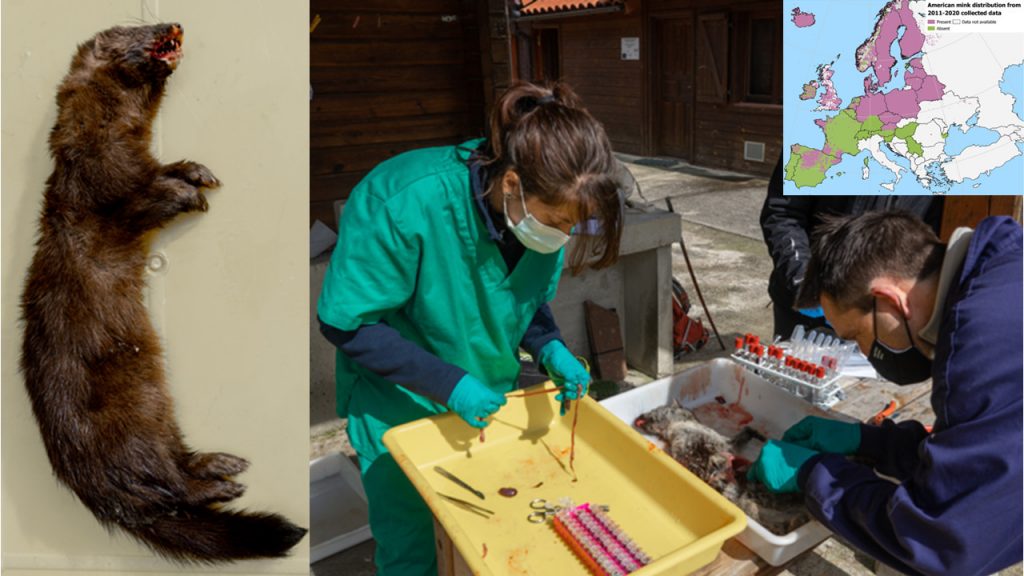
As a result of discussions, the main outcomes of this ENETWILD workshop on harmonized and integrated wildlife disease surveillance across Europe were summarized as follows:
Wildlife disease surveillance as a predefined system
- Wildlife disease surveillance is not a program, but a predefined system aiming at collecting data for subsequent analysis, interpretation, and management to improve health within wildlife populations but also domestic animals and humans.
- Make One Health really ONE – do not focus on just one of the three parts. As a general comment, it was stated that the One Health perspective is often not fully understood and/or applied. Often, there are completely different objectives and points of view among specific policy makers.
- There is also need of increasing vertical (regional to international) and horizontal coordination (e.g., agriculture, wildlife, and human health) among agencies and between governmental agencies and academia.
- Supra-national coordination and collection of data is required, involving authorities at the European level: complementing top-down and bottom-up approaches.
- The roles in wildlife population wildlife disease surveillance must be defined and coordinated. The academia must be involved in surveillance to potentiate an under powered system: testing methods, consulting, monitoring, research on specific items, supporting data analysis, consultants for multi/transdisciplinary approach, training. The integration of the medical sector into wildlife disease surveillance is key to fully monitor disease emergence.
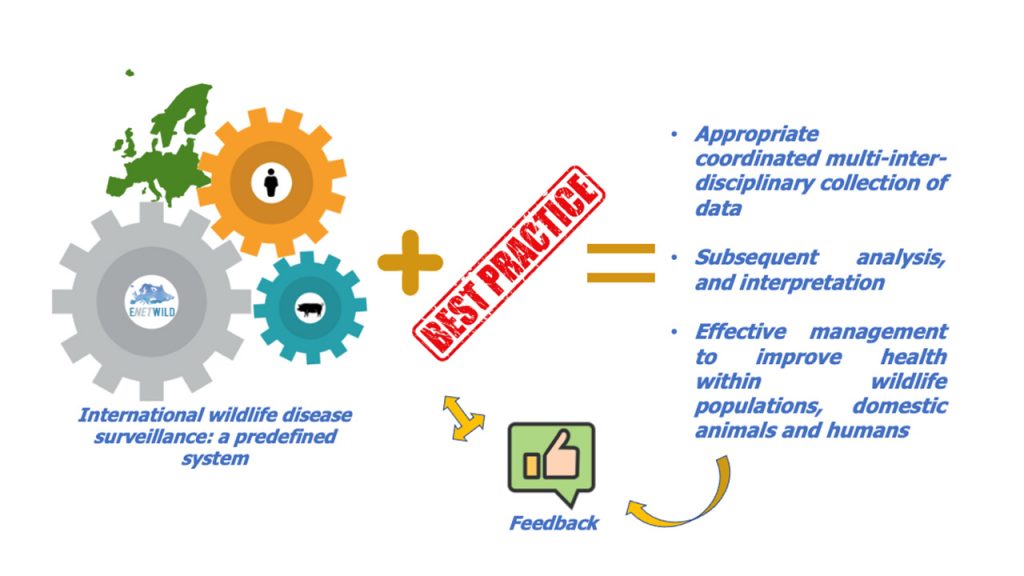
Wildlife disease surveillance: best practices
- Best practices in wildlife surveillance should be made public and strongly supported by intergovernmental agencies. Veterinarians require appropriate training not only on wildlife disease and surveillance, but on wildlife ecology, wildlife needs, and society opinions.
- One health approach requires extending the surveillance to non-communicable pathogens and neglected hosts and epidemiological scenarios, which must integrate human health, population, and environmental variables.
- Passive surveillance needs for assertion of its sensitivity for detection of disease events in wild animals, requiring different agencies at the level of states/regions to coordinate activities and sufficient resources.
- Data availability and sharing is essential. While many stakeholders and agencies with involvement in wildlife disease surveillance may will to share information, current European schemes of data sharing restrict the usefulness of these data for surveillance purposes.
- There is need to involve different stakeholders and expertise to develop complementary approaches for wildlife disease surveillance. Professionals and policy makers should contribute to increase the knowledge of citizens in how to use the tools available, such as citizen science. Communication and engagement strategies must be planned and implemented to motivate and raise awareness on the importance of wildlife disease surveillance and management, clearly defining aims at different levels, from local to international.


